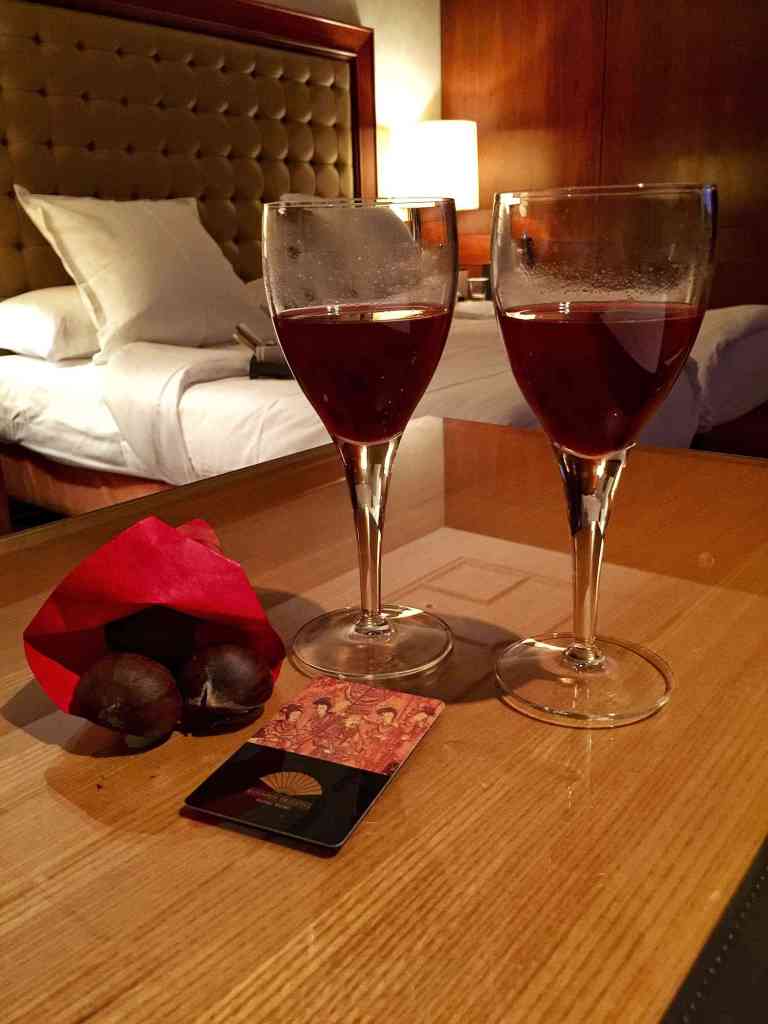
Winter Favorite Since the Beginning of Time.
Not quite the beginning of time, but definitely as early as the 1st century AD. Mulled wine is a staple in the wintertime, especially Christmas. Learn the mulled wine history, how it all started, and how it came to be a beloved Christmas tradition:
Mulled Wine History: From the Ancient Greeks & Romans to Europe’s Christmas Markets
Ancient Greeks & Romans
Mulled wine has been one of winter’s most popular drinks since the time of the Ancient Greeks and Romans who simply did not want to waste excess wine.
Ancient Greeks first poured in spices and heated the wine as a way to extend and preserve the harvest. In fact, heating the wine and mulling it with spices effectively masked the flavors of the bad wine and even of spoiled wine.
Ancient Romans soon made it their own and as it was first documented in 20 AD in the Roman Empire as a medicinal tonic to warm the body during cold seasons. The drink consisted of boiled red wine with honey, dates, and spices like pepper, laurel, and saffron. Often good wine topped it off to further enhance the drink.
In later years, as Romans conquered Europe they also instilled into Europeans the love of this winter-warming drink.
Europe in the Middle Ages
Mulled wine really took off in popularity during the Middle Ages. In the 12th century, a drink called “spicy wine” first emerged in France and Spain thanks to the Romans. The drink moved north and spread to England in the 13th century.
It has been well-documented that mulled wine was a favorite drink of King Henry III and because of that, there was a high consumption throughout the country.
Fellow European countries in the north soon shared the love of this hot drink particularly in Germany and the Nordic countries where colder winters prevailed.
Mulled wine was actually the drink of the choice in the 16th century because was safer to consume than water during the Black Death years.
Christmas Market Competitions
For these hundreds of years, mulled wine was a winter favorite. Then in the 1890s, the drink became a Christmas staple thanks to German Christmas markets. These markets were held, and still are held, outdoors despite the freezing cold temperatures.
As such, mulled wine was the perfect drink to warm up because of the heat of the wine and the warming effects of alcohol.
In order to become the best sellers of the markets, vendors would concoct their own recipes and variations of mulled wine in order to attract the most customers. And from there, mulled wine became a Christmas tradition.
A Basic Mulled Wine and Its Variations
Essentially, the drink is wine, usually red wine, infused with spices, and served warm. Spices vary by region and typically contain allspice, anise, cinnamon, cloves, nutmeg, and/or vanilla. Fruits and sugars can be added, as well as additional liquors like brandy, vodka, or sherry. There are also non-alcoholic version like mulled cider using apple
Today, almost all European cultures have their own variations of mulled wine. For instance, Alsace uses its local Riesling or Pinot Blanc. Sweden and Scandinavia include cardamom, ginger, and cloves, and they sometimes add vodka, aquavit, or brandy. Bulgarians add honey, apples, and citrus fruits while Polish make theirs from hot beer.
Make your own mulled wine this winter with these mulled wine spices and kits.
Disclaimer: This article contains affiliate links. As an Amazon Associate, I earn from qualifying purchases. With no additional cost to you, your purchases earn me a commission if you click on the links via my website – Thank you!
Sign up for my newsletter on the sidebar for blog updates and my travel insider tips! And, check out my vlogs on YouTube!


